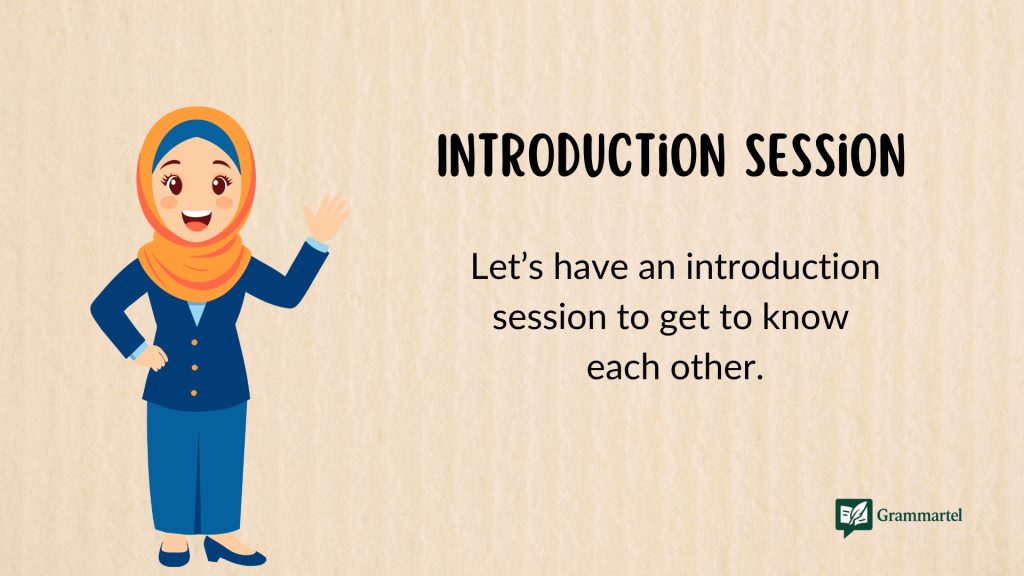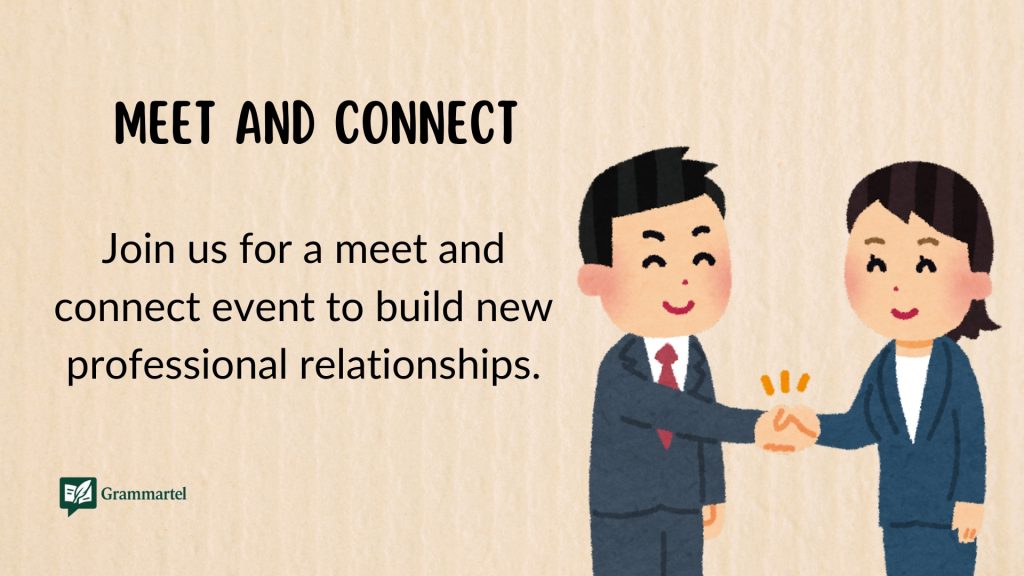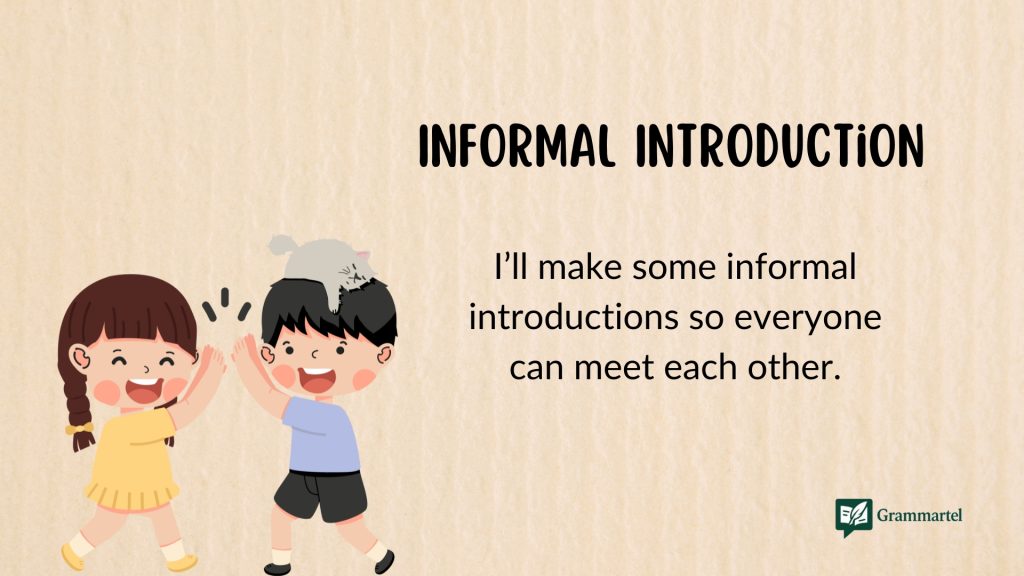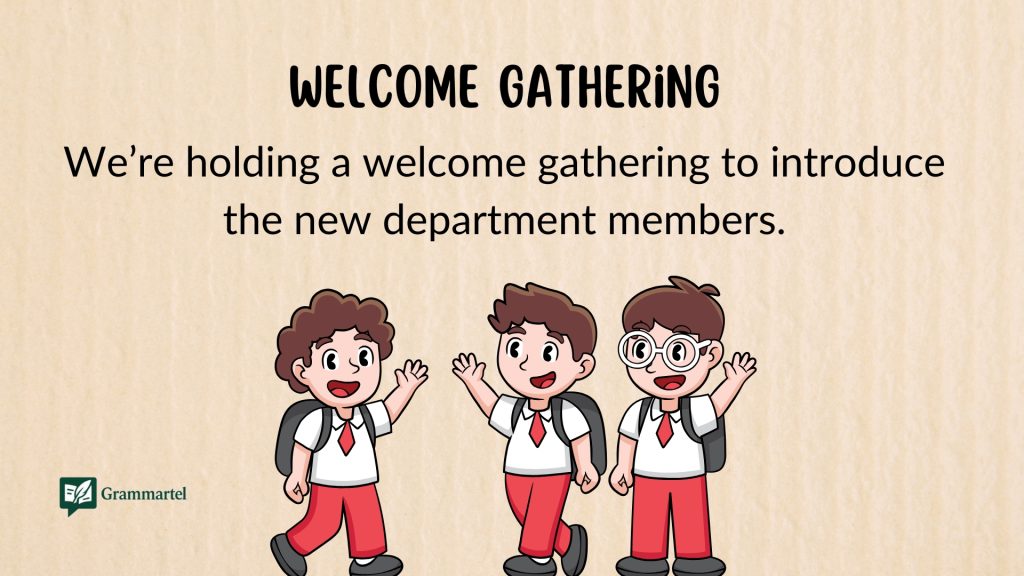When we meet someone for the first time or even greet familiar people, the way we say it matters. Instead of just saying “meet and greet,” there are many polite and creative ways to express this gesture. These alternatives can make conversations more pleasant and show respect. Whether in formal settings or casual conversations, knowing these different ways to say “meet and greet” can improve communication and leave a positive impression.
What Does “Meet and Greet” Mean?
A “meet and greet” is a short event where people come together to introduce themselves. It’s often informal, allowing guests to chat and get to know one another. These events are common in both professional and social settings. People usually attend to make connections or build relationships. It is a friendly way to start a conversation in a relaxed atmosphere.
When to Use “Meet and Greet”
Use “meet and greet” when you want to describe an event designed for introductions and casual conversation. It’s perfect for gatherings, networking events, or even when guests arrive at a party or meeting. You can use it in both professional and social contexts, like a corporate event or a community get-together. It helps set a tone for friendly interaction at the beginning of an event.
40 Polite Ways to Say “Meet and Greet”
1. Introduction Session

- Meaning: A session where people are introduced to one another.
- Explanation: A formal or casual occasion to make initial introductions.
- Example: “Let’s have an introduction session to get to know each other.”
- Best Use: In professional settings or networking events.
- Worst Use: At a casual gathering or party.
- Tone: Neutral, professional.
2. Orientation
- Meaning: A brief introduction or session aimed at familiarizing newcomers with the environment or group.
- Explanation: Typically used for new members, employees, or participants.
- Example: “We will begin the orientation with introductions from each team member.”
- Best Use: In corporate settings or educational institutions.
- Worst Use: In informal social situations.
- Tone: Formal, welcoming.
Consider reading : 40 Better Ways to Say “I Will Let You Know” (With Real-Life Examples).
3. Welcoming Event
- Meaning: A special gathering designed to welcome individuals or groups.
- Explanation: A gathering to greet newcomers or visitors in a warm and friendly manner.
- Example: “The company is hosting a welcoming event to introduce the new employees.”
- Best Use: At the beginning of a professional collaboration or in social groups.
- Worst Use: At a completely casual gathering.
- Tone: Friendly, cordial.
4. Networking Mixer
- Meaning: An informal gathering where people meet to network and exchange information.
- Explanation: Usually used in business or professional contexts where individuals can build connections.
- Example: “Join us for a networking mixer to meet industry professionals.”
- Best Use: In professional or business settings.
- Worst Use: In casual or private settings.
- Tone: Casual, professional.
5. Getting Acquainted Session
- Meaning: A casual event for familiarizing oneself with others.
- Explanation: A session where participants can interact and learn about each other.
- Example: “We’ll start with a getting acquainted session so everyone can meet the new team.”
- Best Use: In team-building or ice-breaking activities.
- Worst Use: At an informal event with no structured activities.
- Tone: Friendly, informal.
6. Meetup
- Meaning: A casual gathering to meet people with shared interests.
- Explanation: A relaxed environment designed for socializing and networking.
- Example: “There’s a meetup for new employees tomorrow at the conference room.”
- Best Use: At informal social events or hobbyist groups.
- Worst Use: In formal business events or conferences.
- Tone: Casual, friendly.
7. Social Hour
- Meaning: A scheduled time for informal socializing and mingling.
- Explanation: Typically an informal event designed for mingling and meeting new people.
- Example: “Let’s get together for a social hour after the meeting.”
- Best Use: At company events, casual parties, or social events.
- Worst Use: In formal settings or during business presentations.
- Tone: Casual, easy-going.
8. Pre-Event Introduction
- Meaning: An introduction session before the start of a larger event.
- Explanation: A way to introduce participants or speakers prior to the event.
- Example: “We’ll have a pre-event introduction to familiarize everyone with the schedule.”
- Best Use: In conferences or large corporate events.
- Worst Use: At casual or non-professional gatherings.
- Tone: Formal, structured.
9. Group Introduction
- Meaning: A session where members of a group introduce themselves to one another.
- Explanation: A simple introduction among a small or large group to foster familiarity.
- Example: “We’ll begin with a group introduction so everyone knows each other.”
- Best Use: In a team-building exercise or professional workshops.
- Worst Use: In a very informal setting.
- Tone: Neutral, inclusive.
10. Introductory Briefing
- Meaning: A formal session where people are introduced and given key information.
- Explanation: Often used in a professional setting to provide an overview of expectations or goals.
- Example: “The first part of the meeting is an introductory briefing with all new employees.”
- Best Use: In business or training environments.
- Worst Use: At a casual social event.
- Tone: Formal, professional.
11. Community Gathering
- Meaning: A meeting designed for members of a specific community to come together.
- Explanation: A gathering for people with common interests or backgrounds.
- Example: “Our next community gathering will be a great opportunity to meet new members.”
- Best Use: In community groups or local organizations.
- Worst Use: In corporate settings.
- Tone: Warm, inviting.
12. Collaboration Kickoff
- Meaning: An initial meeting to start a new collaboration or project.
- Explanation: A formal introduction to a project or group effort.
- Example: “We’ll have a collaboration kickoff to introduce the project team and discuss the goals.”
- Best Use: In corporate or project-based settings.
- Worst Use: At a casual event or gathering.
- Tone: Professional, goal-oriented.
13. Team Introduction
- Meaning: An event where team members introduce themselves to one another.
- Explanation: Typically used when a new team is formed or when people join an existing team.
- Example: “Let’s go around and do a quick team introduction so we can all get to know each other.”
- Best Use: At the beginning of a team project or workshop.
- Worst Use: In a non-team setting.
- Tone: Friendly, neutral.
14. Meet and Connect

- Meaning: An event where individuals meet to form connections.
- Explanation: Designed to encourage networking and relationship-building.
- Example: “Join us for a meet and connect event to build new professional relationships.”
- Best Use: At professional networking events or conferences.
- Worst Use: At casual, non-business-related events.
- Tone: Professional, inviting.
15. Icebreaker Session
- Meaning: A session designed to help people feel comfortable and break the initial tension.
- Explanation: Typically uses activities or games to get people talking and relaxed.
- Example: “We’ll kick off with a fun icebreaker session to get everyone comfortable.”
- Best Use: In team-building or group introductions.
- Worst Use: At formal or business-only events.
- Tone: Lighthearted, fun.
16. Casual Gathering
- Meaning: A laid-back event for people to meet and talk informally.
- Explanation: Designed to allow people to relax and interact casually.
- Example: “We’re having a casual gathering to meet the new members of the team.”
- Best Use: In informal social or work environments.
- Worst Use: At professional conferences or formal events.
- Tone: Relaxed, friendly.
17. Visitor Reception
- Meaning: A formal or semi-formal event for receiving and introducing visitors.
- Explanation: A setting where guests are introduced to the organization or team.
- Example: “The visitor reception will include introductions and a tour of our facilities.”
- Best Use: For visitors or new employees.
- Worst Use: At social or informal settings.
- Tone: Professional, respectful.
18. Welcome Reception
- Meaning: A formal or informal event organized to welcome new arrivals.
- Explanation: A gathering meant to greet and introduce newcomers.
- Example: “We’ll have a welcome reception for all new employees to meet the team.”
- Best Use: In business or organizational settings.
- Worst Use: At a completely casual event.
- Tone: Warm, professional.
19. Introductions Round
- Meaning: A round where everyone introduces themselves to the group.
- Explanation: A method of introduction in a group setting, usually brief and structured.
- Example: “Let’s start with an introductions round to get to know everyone.”
- Best Use: At the beginning of a meeting or seminar.
- Worst Use: At an informal party or casual event.
- Tone: Neutral, structured.
20. Team Welcome
- Meaning: A special event to welcome new team members.
- Explanation: A meeting designed to integrate new members into a team or group.
- Example: “The team welcome event is set for next Monday to introduce our newest colleagues.”
- Best Use: In corporate settings or team-building activities.
- Worst Use: In informal, non-team settings.
- Tone: Friendly, professional.
21. Professional Networking Event
- Meaning: An event designed specifically for professionals to meet and exchange contacts.
- Explanation: A gathering focused on networking and building professional relationships.
- Example: “We are hosting a professional networking event to connect with industry leaders.”
- Best Use: In business or industry-specific gatherings.
- Worst Use: At casual social gatherings with no professional context.
- Tone: Formal, professional.
22. Collaborative Introduction
- Meaning: An introduction designed to foster collaboration and teamwork.
- Explanation: A session aimed at bringing people together for cooperative work.
- Example: “Let’s have a collaborative introduction to understand how we can work together effectively.”
- Best Use: In team-based projects or cross-functional meetings.
- Worst Use: At purely social or recreational events.
- Tone: Professional, cooperative.
23. Friendly Welcome
- Meaning: A casual but warm event to greet newcomers.
- Explanation: A welcoming atmosphere where people feel comfortable and at ease.
- Example: “We’re planning a friendly welcome for all new members tomorrow afternoon.”
- Best Use: In informal or friendly environments.
- Worst Use: In highly professional or formal settings.
- Tone: Casual, warm.
24. Pre-Meeting Meet and Greet
- Meaning: A casual introduction session before an official meeting.
- Explanation: An informal opportunity to meet others before a scheduled meeting begins.
- Example: “We’ll have a pre-meeting meet and greet to get to know each other better.”
- Best Use: Before a large meeting or conference.
- Worst Use: At an informal event without any formal agenda.
- Tone: Casual, neutral.
25. Team Meet and Greet
- Meaning: A meet and greet event specifically for team members.
- Explanation: A session designed to allow team members to introduce themselves and begin working together.
- Example: “Let’s do a quick team meet and greet before we dive into the project.”
- Best Use: When forming a new team or at the start of a new project.
- Worst Use: At unrelated events or non-team situations.
- Tone: Collaborative, friendly.
26. Informal Introduction

- Meaning: A casual introduction with no formal structure.
- Explanation: An easygoing, informal way to introduce people to one another.
- Example: “I’ll make some informal introductions so everyone can meet each other.”
- Best Use: At social or relaxed events.
- Worst Use: In very formal business settings.
- Tone: Casual, laid-back.
27. Virtual Meet and Greet
- Meaning: A meet and greet conducted online via video call.
- Explanation: An introduction session conducted remotely, usually through video conferencing.
- Example: “We’ll have a virtual meet and greet next week to introduce everyone.”
- Best Use: For remote teams or virtual events.
- Worst Use: In-person gatherings or physical events.
- Tone: Casual, professional.
28. Team Member Introductions
- Meaning: The act of introducing each member of the team.
- Explanation: A specific introduction of each individual within a group or team.
- Example: “Let’s go around and do team member introductions before we start.”
- Best Use: At the beginning of team meetings or workshops.
- Worst Use: In informal social gatherings with no structure.
- Tone: Neutral, professional.
29. Welcome Session
- Meaning: A session designed to welcome newcomers to a group.
- Explanation: A structured gathering to integrate new members into a team or organization.
- Example: “We’re holding a welcome session for the new employees next week.”
- Best Use: In onboarding or orientation programs.
- Worst Use: At informal or casual settings.
- Tone: Warm, professional.
30. Newcomer Meet-Up
- Meaning: A gathering designed to introduce newcomers to a group or event.
- Explanation: A more informal or casual introduction of new members.
- Example: “We’re organizing a newcomer meet-up to help new team members settle in.”
- Best Use: At social events or informal gatherings.
- Worst Use: In highly structured, formal business settings.
- Tone: Welcoming, casual.
31. Introduction Roundtable
- Meaning: A roundtable discussion where people introduce themselves.
- Explanation: A group setting where participants share information about themselves.
- Example: “Let’s start with an introduction roundtable to learn about everyone’s background.”
- Best Use: At professional networking events or team-building exercises.
- Worst Use: In informal social events.
- Tone: Neutral, professional.
32. Kickoff Event
- Meaning: An event that kicks off a new initiative or project.
- Explanation: A way to start something new, often with introductions.
- Example: “We’re planning a kickoff event to meet all the stakeholders involved in the project.”
- Best Use: At the beginning of a project or initiative.
- Worst Use: At casual events without a structured purpose.
- Tone: Professional, enthusiastic.
33. Connection Event
- Meaning: An event focused on making personal or professional connections.
- Explanation: A gathering designed to help people connect with each other.
- Example: “Join our connection event to meet and network with other professionals.”
- Best Use: In networking or social environments.
- Worst Use: In formal corporate presentations.
- Tone: Friendly, professional.
34. New Hire Welcome
- Meaning: A welcome event specifically for new employees.
- Explanation: A session where new employees are introduced to the organization.
- Example: “The new hire welcome event will give you an overview of the company and introduce you to your colleagues.”
- Best Use: In onboarding processes for new hires.
- Worst Use: At informal or non-professional events.
- Tone: Professional, formal.
35. Meet-and-Connect Session
- Meaning: A session where individuals meet and connect with one another.
- Explanation: Focuses on building connections and relationships among attendees.
- Example: “We’re hosting a meet-and-connect session to help you network with fellow attendees.”
- Best Use: In professional settings, networking events.
- Worst Use: In private or casual settings.
- Tone: Professional, welcoming.
You may also want to read : 40 Alternatives Ways to Say “Please Let Me Know Your Thoughts” (With Examples).
36. Welcome Gathering

- Meaning: A casual or formal event to greet newcomers.
- Explanation: Designed to introduce new people or groups to a community.
- Example: “We’re holding a welcome gathering to introduce the new department members.”
- Best Use: At the start of a new role or in team events.
- Worst Use: At purely casual, non-structured events.
- Tone: Warm, formal.
37. Networking Meet
- Meaning: A meeting designed to help individuals network and meet others.
- Explanation: A formal event where people can exchange contacts and build connections.
- Example: “Join us for a networking meet to connect with industry leaders.”
- Best Use: In conferences and professional networking events.
- Worst Use: At informal gatherings with no networking focus.
- Tone: Professional, structured.
38. First Impressions Session
- Meaning: A meeting where participants can make a good first impression.
- Explanation: A formal session where introductions are made and relationships begin.
- Example: “We’ll start with a first impressions session so everyone can meet each other.”
- Best Use: At the beginning of a work relationship or collaboration.
- Worst Use: In casual, informal social situations.
- Tone: Professional, welcoming.
39. Engagement Session
- Meaning: A session where people engage with one another, typically in an introductory manner.
- Explanation: Encourages conversation and interaction among participants.
- Example: “Let’s begin with an engagement session to get everyone talking.”
- Best Use: At social or professional events aimed at engagement.
- Worst Use: In formal corporate events with no engagement goal.
- Tone: Casual, professional.
40. Friendly Introduction Session
- Meaning: An informal event where people introduce themselves in a friendly manner.
- Explanation: A casual introduction session designed to make people feel comfortable.
- Example: “We’ll begin with a friendly introduction session to make everyone feel at ease.”
- Best Use: In casual or friendly settings.
- Worst Use: In corporate or highly formal events.
- Tone: Friendly, informal.
Conclusion
In conclusion, using polite and varied expressions for “meet and greet” can enhance our communication skills. By choosing the right words for different situations, we create a welcoming atmosphere and show courtesy to others. It’s a small effort that can make a big difference in how we connect with people. Keep these alternatives in mind to make your greetings more thoughtful and respectful.
For more engaging articles, stay tuned to Grammartel.

